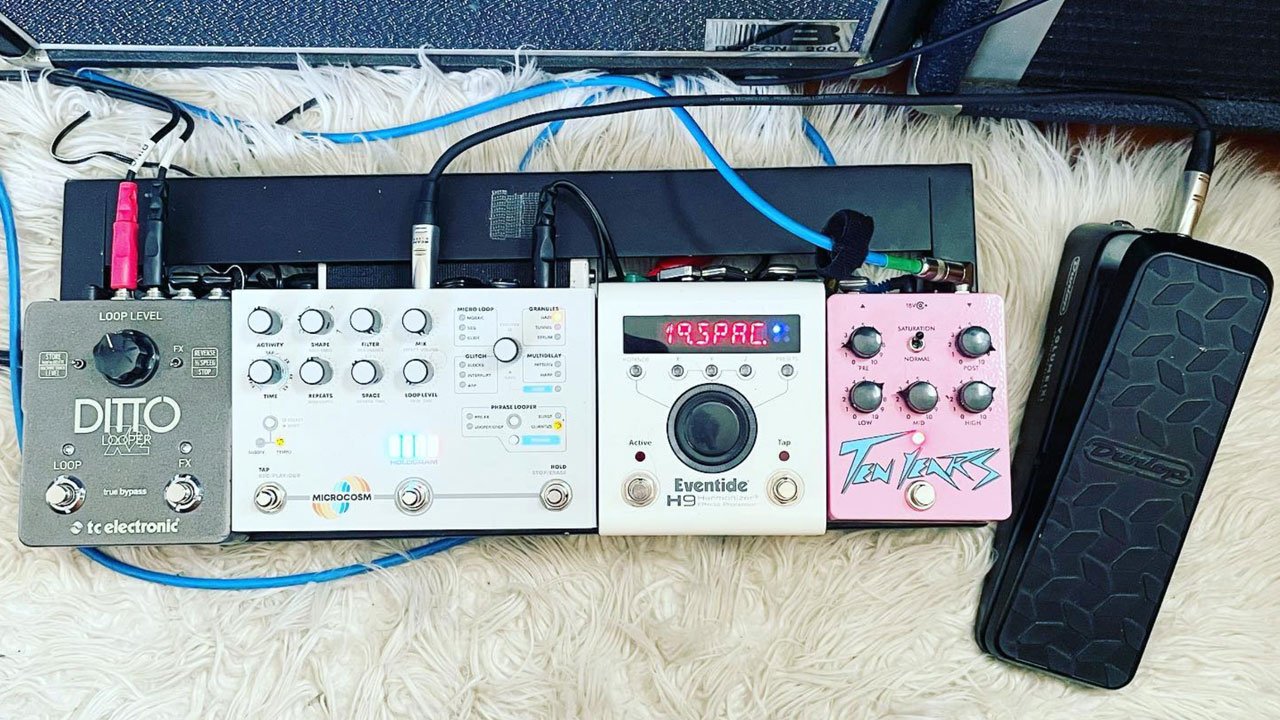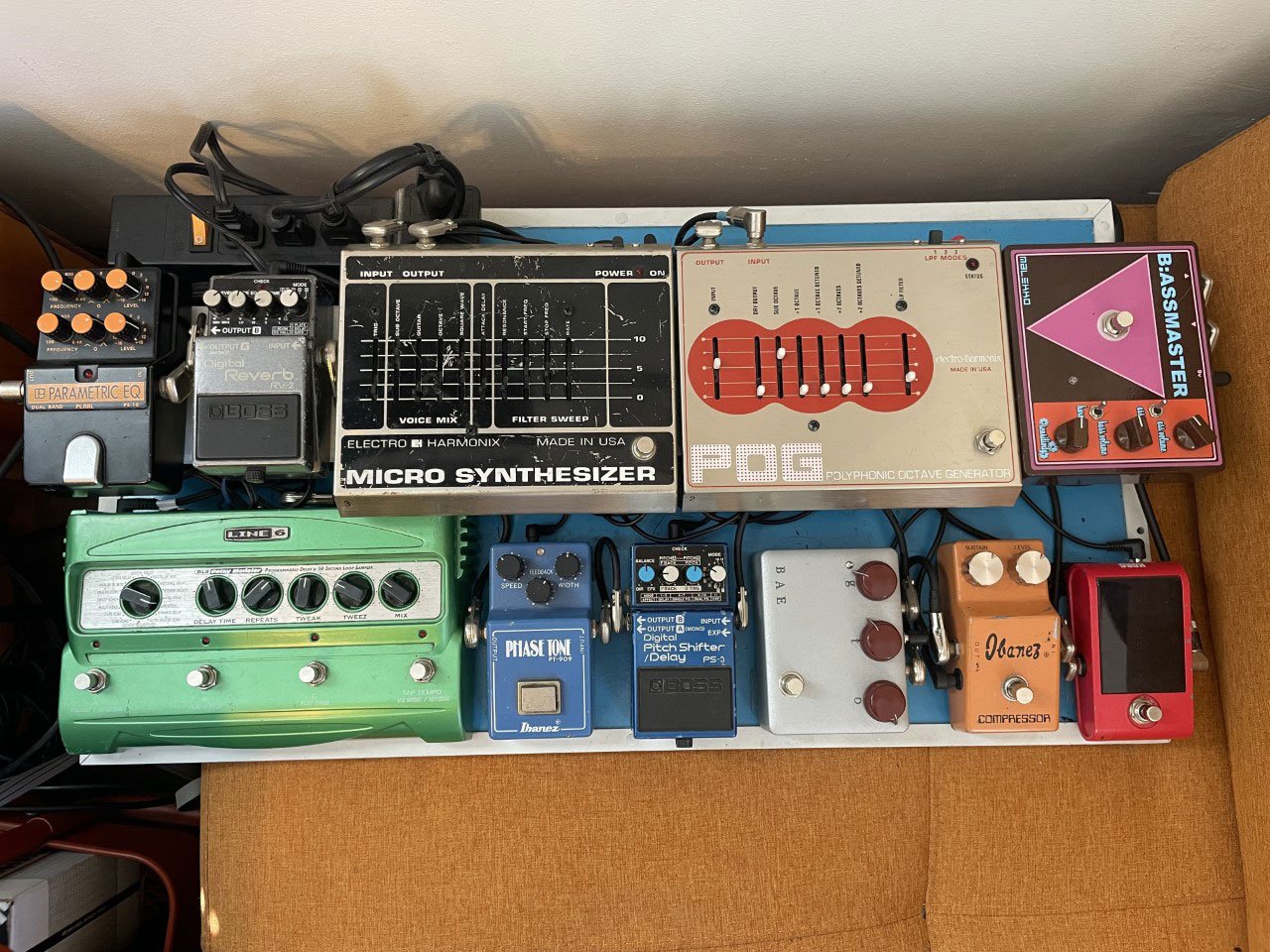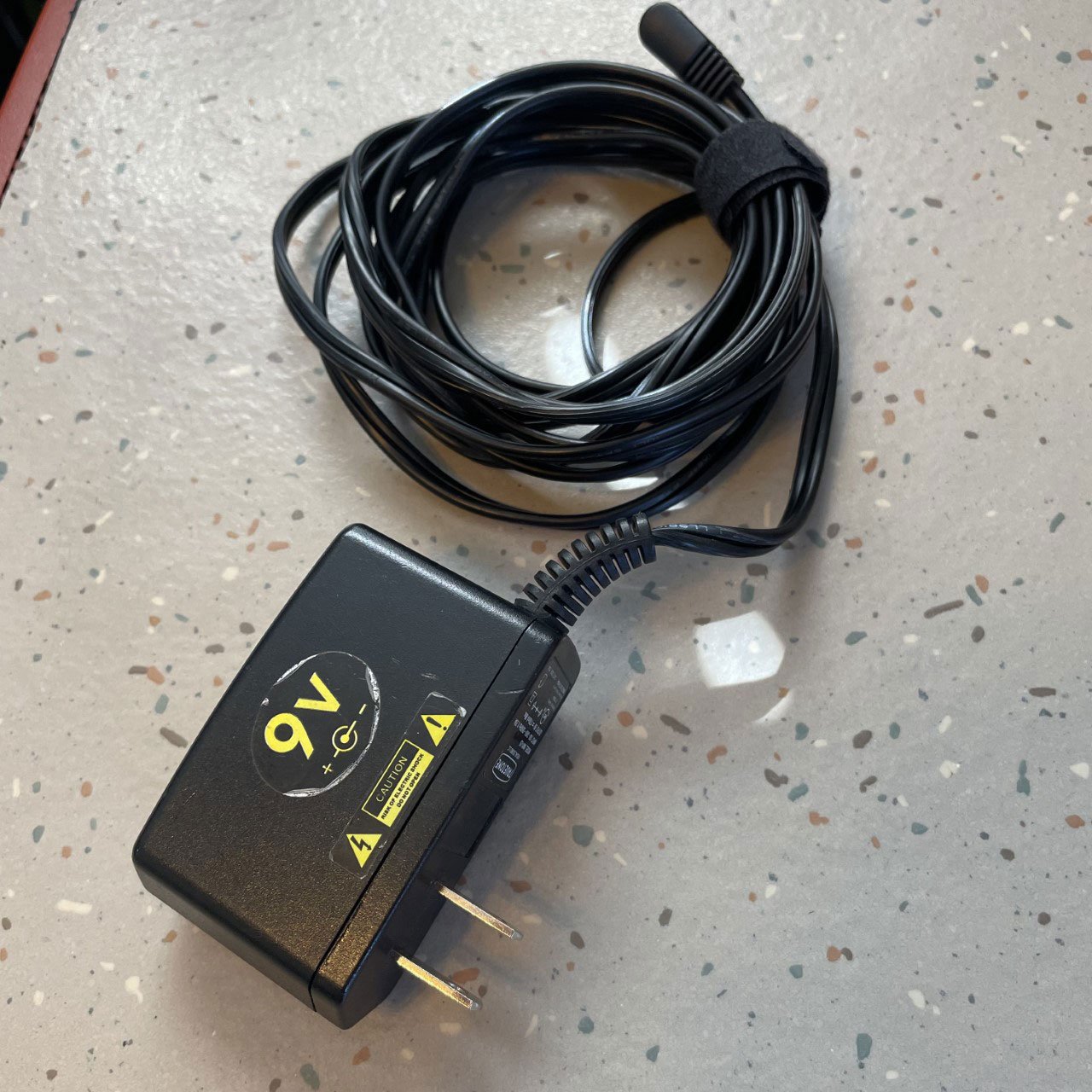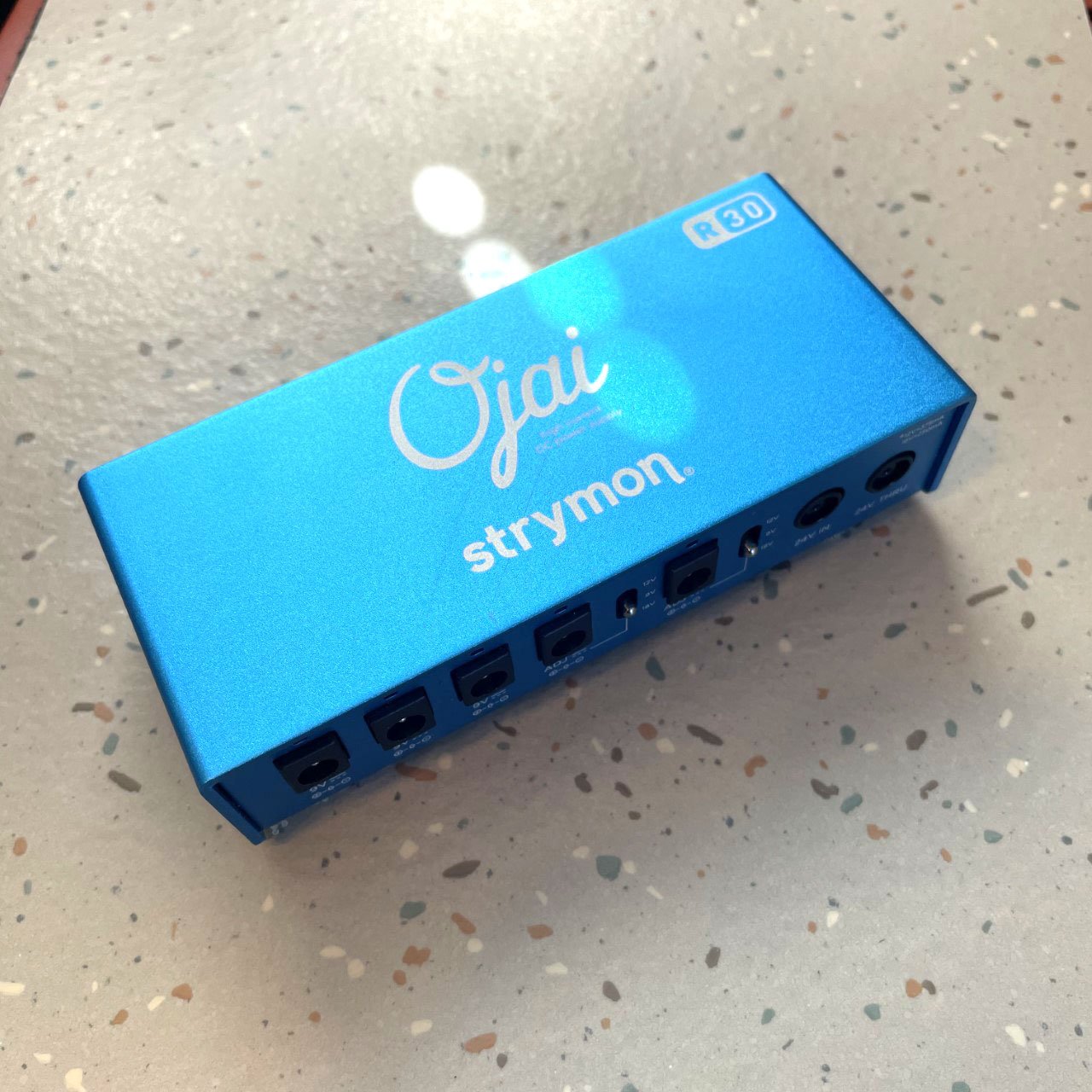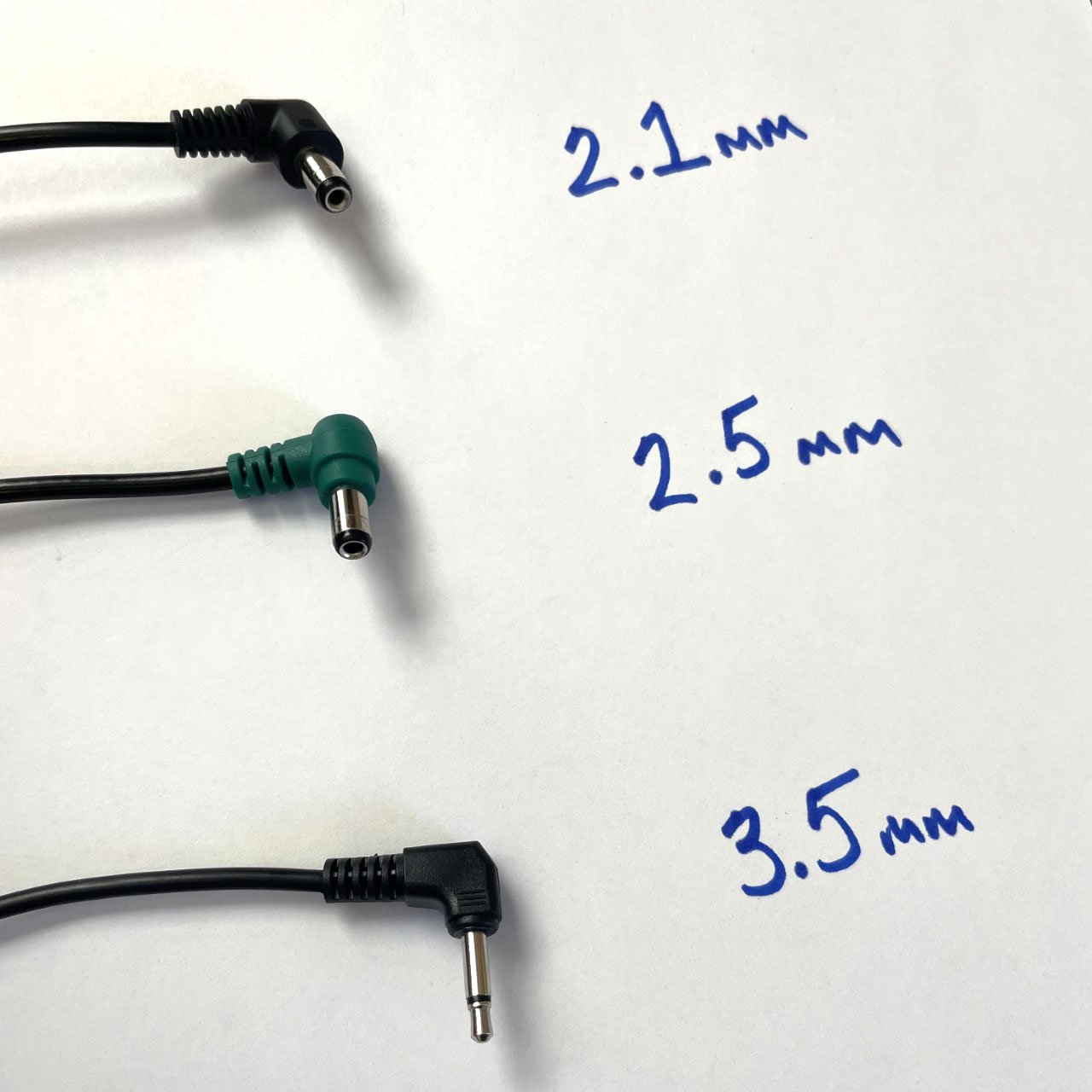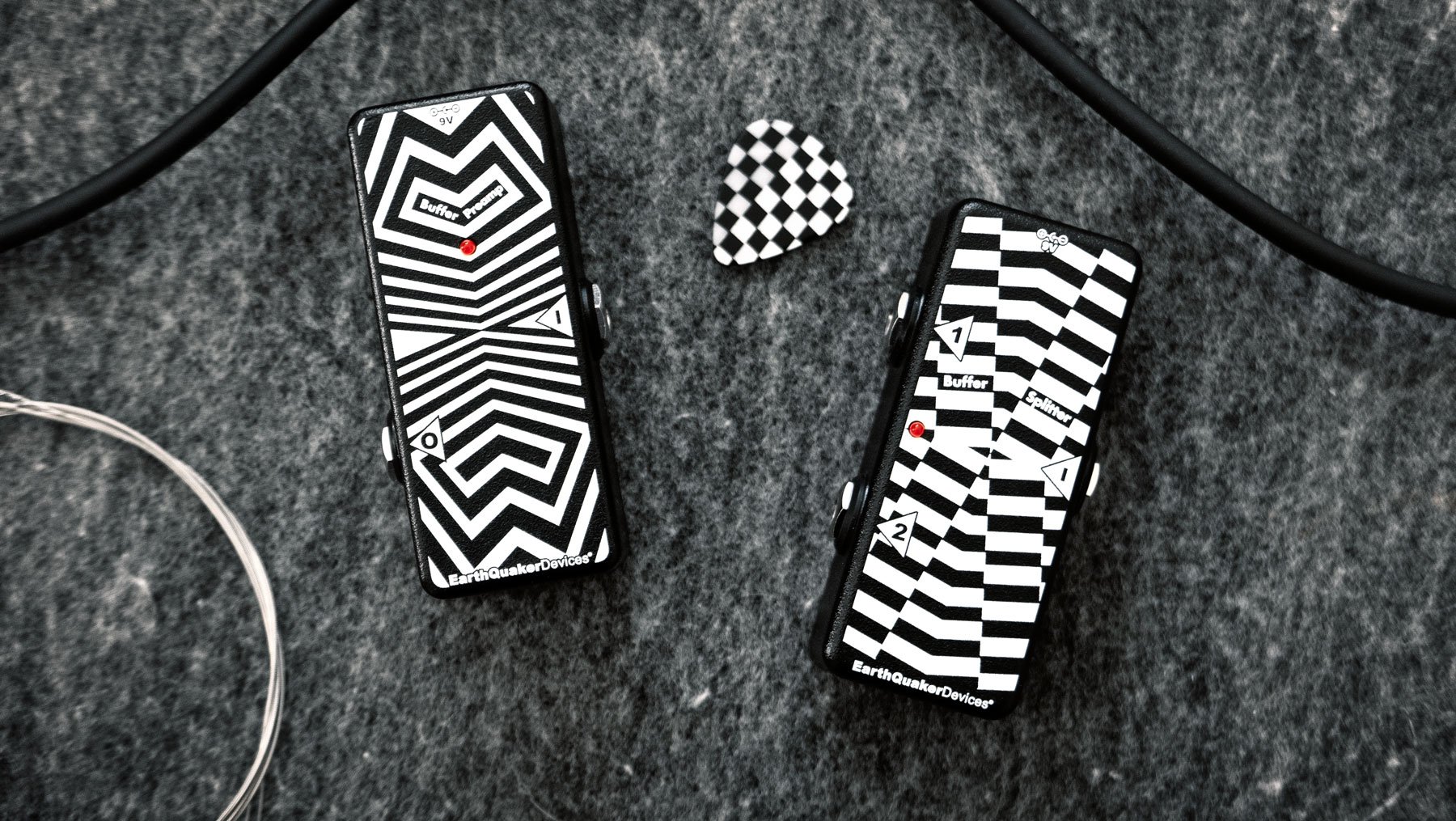A Beginners Guide To Pedalboards Pt. 2 : Those Boards Don’t Work, Unless You Have Power!
Patrick Benson
The power section is the heart of any electronic device, and without that pulse, you can’t accomplish anything. No power means you’re missing out on all the fun of having one of these toenail smashers - which is to make some noise, impress your friends, make new friends, and at the very least, have an adequate replacement for lost nail clippers.
There are countless options for power supplies, and they all have their features, advantages, and disadvantages. If you find yourself building your own from scratch or revamping an existing board for the sixth time, it’s safe to assume that you have a heaping pile of pedals on the floor beneath you. When you get a sense of what is making it into the final layout, it’s good practice to lay everything out and arrange it to look appealing but functional to your needs before locking everything down. I’ll dive deeper into signal chain and cabling in the future, but from here, you should assess how many pedals you have with each of their voltage needs, polarity, and how much current (milliamps or mA) they draw.
“But wait… what does any of this even mean?”
HOW MANY POWER SUPPLIES ARE THERE?
There are two types of power supplies: Switch mode (typical Wall Wart) and Toroidal (or Linear).
Swith mode wall wart supply.
I would steer clear of the wall wart supplies when creating pedalboards as they make noise. However, it’s fine if you’re powering one pedal or daisy-chaining several analog pedals. If you’re using digital effects that require their power, this approach will not work.
Linear supply.
Linear supplies are great, and I personally use them exclusively for pedalboard builds and with all of my systems. They are widely praised due, in part, to their use of isolation transformers, delivering clean and quiet power.
(Something to keep in mind is that not all power supplies with multiple outlets are isolated. The cheaper ones pretend to be big kids in their older sibling’s clothes, but they’re still just as pesty).
VOLTAGE (V) AND MILLIAMPS (mA)
Volts refer to the amount of voltage a pedal requires to function. You want to always ensure the voltage from your power supply unit (PSU) matches the voltage of the pedal. Not doing so may damage the pedal if you overpower it, and that’s bad!
Milliamps refer to the maximum current/amperage your pedal needs to behave as intended. You want to at least match the mA, but it’s good practice to have more on the PSU than needed.
For example, if a pedal or PSU has a reading of 9v at 250mA, you want to match the volts (9v PSU to the 9v pedal) and have a reading of at least 250mA from the PSU.
POLARITY EXPLAINED
Similar to batteries, every DC pedal has a positive and negative power rail, and like batteries, the correct rails need to be properly assigned to the pedal. The most common polarity for pedals is center negative (-), meaning that the middle pin on the DC plug is negative (or ground), and the outer barrel is positive (+).
However, not all pedals are created the same, and some require center positive power (like the Eventide H9). If you’re unsure about your pedals’ polarity, retreat to your owner’s manual.
WHAT IS THAT PLUG?
There are three types of DC plugs…
2.1mm Barrels: most common, often center negative but not always.
2.5mm Barrels: often center positive (Eventide H9) but not always.
3.5mm Jacks: you’ll see these on the ProCo Rat, old Ibanez pedals, the KLON, Vintage Tube Screamers, and others. They’re often center positive, but not always, so check the manual.
If you’re ever unsure about power regarding a pedal, don’t make any sudden moves and sit back with a cup of coffee or tea, recollect your thoughts, and dig back into the owner’s manual to find out more information. If you’ve lost the manual or your pedal never came with one, you can always trust in the powerful search engine BING for all the right answers. If you’re still coming up empty after doing all of the above, you could get a milliamp meter to measure the right milliamps (mA) that you’ll need to power your pedals.
POWER SUPPLIES I DIG
Now let’s get to the fun stuff. Here are some isolated power supplies that I recommend. I own all of these and use them regularly, so let’s dive in!
Strymon Zuma & Ojai: These are my personal favorites as they check off all the boxes for me. They are the lightest units I’ve come across due to their aluminum chassis while still distributing high current draw. They are more energy-efficient and can deliver power to your pedals while overseas (with appropriate IEC cable). These have exceptionally low noise due to dual isolation. Each of the nine outputs is isolated from the 24v DC, and the 24v DC is isolated from the AC input, eliminating ground loop and line noise issues from the alternating current.
The Zuma and Ojai R30 have two channels of selectable voltages for 9v, 12v, and 18v pedals. The Zuma R300 has one channel, while the Ojai is perfect for small boards with up to five - 9volt pedals. The best part is that if you run out of power, their entire system is modular, allowing you to expand if you need more. You can add more outputs to the Zuma by connecting an Ojai or Ojai R30 with the 24v Out jack. I have built a pedalboard before with one Zuma, an R30, and two Ojai’s all connected to each other and didn’t have a single ground loop or noise issue. The power cables they include are also very nice, with plenty of options for length depending on your needs.
CIOKS PowerMax: I have only had one experience with this company, and that is with the PowerMax (version 1) that came with my Eventide H9. It’s my second favorite PSU and is currently housed underneath my travel pedalboard (a Pedaltrain metro). The design is more rugged than the Strymons, a bit heavier, but the height is much thinner, allowing it to fit snug under flat pedaltrain style boards. It has plenty of options via the selectable dip switches for different output voltages such as 9,12,15, and 18V. I like the dip switches because it’s not easy to get your fingers in there to select voltages, meaning it’s harder to accidentally switch the output to the wrong voltage. You wouldn’t want to give your rare vintage pedal 18 volts if it didn’t ask for it. From browsing their website, it appears the team over at CIOKS has made a power supply for every type of person out there, so you should have no trouble finding the right PSU for your needs if you go this route. My only gripe is that the output connectors are RCA which is a bit annoying if you run out of their proprietary cables, I would suggest ordering spares.
Voodoo Lab Pedal Power 2 Plus: This was my first power supply, and it still holds up to this very day. It’s like the Boss compact pedal in the PSU universe. They rarely fail, and you see them everywhere for a reason. The dip switches on the bottom make it easy to power vintage Boss pedals (12v ACA) and high current 9v pedals like the Line 6 DL4. It even has a unique feature that allows you to drain or sag the voltage between 4 and 9 volts giving you the “dying battery” sound. With custom cables and adapters such as a Voltage and Current doubler, you can use any of the isolated outputs to run 18 or 24v pedals and get more milliamps if needed.
T. Rex Fuel Tank: This was one of the first supplies I recall having a switch for 220v power. I relied heavily on this red brick back when I had a small board of essentials while touring internationally. The trick is remembering to switch it back when you’re back home. Hence, I really like the Strymon supplies as the internal IC chips do all of the power switching for you. That being said, I still have my Fuel Tank, and it has never failed me. It’s actually looking at me right now and wondering what I’m saying about it. I’m not afraid of you, Rex!
Ernie Ball Volt: The Volt is simple and with little to no fuss about it. If you’re looking to power a small pedalboard and keep things easy, then this is the best bet for the money. Each volt has four 300mA 9v DC outputs and one 18v thru option. They can even be daisy-chained together, giving you up to ten power outputs. Their footprint is smaller than anything I’ve come across, making it a great travel companion to throw in a guitar case.
Danelectro Battery Billionaire: I find this is a very useful tool to have around my shop, and it comes with me on the road. There’s not much to it, so it makes for a very fast and reliable option when I need power in a hurry. Players I work with often like to swap out different pedals during rehearsals, so rather than wasting time finding power cables that are tucked away on their board, I’ll resort to my friend, the billionaire (if voltages are applicable).
If you use a lot of vintage pedals that are not modded with modern power inputs, then one of these would come in handy. Rather than unscrew the backplates on your Superfuzz every time a battery dies, you can just run it into one of these instead. There is even a switch on the side to turn off the unit so you can keep your patch cables plugged in and not drain power from the batteries. Generally, I would probably never put this on a touring pedalboard, but If I threw together something with four vintage pedals that all accepted 9volts, this would be a great option with an old-school vibe, no wall plugs, ground loops, or line noises. Now I kind of want to build a pedalboard with one of these.
Patrick Benson is a musician, and guitar repair tech based in Los Angeles, California. He works at a repair shop as well as out on the road for Nine Inch Nails and Beck. He plays guitar in the band Charade, has a solo instrumental project and hosts a monthly podcast. You can follow him on Instagram and Twitter.
